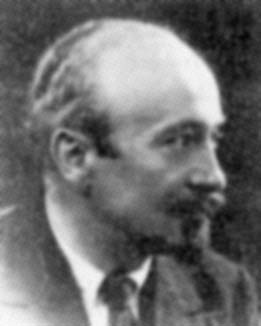
Ernest Benjamin Esclangon
 المؤلف:
J R Levy
المؤلف:
J R Levy
 المصدر:
Biography in Dictionary of Scientific Biography
المصدر:
Biography in Dictionary of Scientific Biography
 الجزء والصفحة:
...
الجزء والصفحة:
...
 1-5-2017
1-5-2017
 663
663
Born: 17 March 1876 in Misson (N of Sisteron), France
Died: 28 January 1954 in Eyrenville, France

Ernest Esclangon studied mathematics at École Normale Supérieure. He entered the École in 1895 and graduated with an agregé in mathematics three years later.
He became an astronomer in 1899 by accepting, out of curiosity, a position offered to him at Bordeaux. It was only three years earlier, in 1896, that Bordeaux was reconstituted as a university and given autonomy and state financing. Esclangon accepted a post at the university observatory but continued to work on mathematical topics for his doctorate. His doctoral thesis, published in the Annales de l'Observatoire de Bordeaux in 1904 was on quasi-periodic functions. Lévy writes in [1]:-
Quasi-periodic functions, newly introduced, constitute a remarkable class among the almost periodic functions. Esclangon elaborated a theory for these functions, studied their differentiation and integration, and examined the differential equations which allow them as coefficients. His doctoral thesis established a basis for their employment at a time when their role in mathematical physics was only beginning to be developed.
In [4] Gaiduk shows how Esclangon anticipated many of Harald Bohr's results on almost periodic functions.
As well as holding the position in the Observatory at Bordeaux, Esclangon taught mathematics in the Faculty of Science there from 1902. He became professor of astronomy at Strasbourg in 1919, having been appointed director of the Observatory there in the previous year. Then, from 1929 to 1944 he was director of the Observatory at Paris, again holding the position of professor of astronomy from 1930 to 1946.
The range of topics on which Esclangon worked during his career is quite remarkable. These include [1]:-
... pure mathematics, applied celestial mechanics, relativity, observational astronomy, instrumental astronomy, astronomical chronometry, aerodynamics, interior and exterior ballistics, and aerial and underwater acoustic detection.
In astronomy he worked on making observations more precise by improving astronomical instruments. He is particularly famous in this area for his brilliant ideas on improving the design of a transit instrument.
From 1914 he worked on ballistics as part of the war effort. His work in this area was aimed at locating the position of enemy guns. When a missile was fired there were two shock waves emitted, one being a spherical wave at the instant of firing which was centred at the position of the gun, while the other was a conical shock wave from the projectile. By 1916 he had devised a method to calculate the position from which the projectile was fired very accurately allowing enemy gun locations to be targeted.
In 1933, using an astronomical calculation of time, he started the 'talking clock' telephone service in Paris. This work was carried out in his role as Director of the Bureau International de l'Heure which he held from 1929 to 1944.
Esclangon was honoured with election to the Académie des Sciences in 1939 and the Bureau des Longitudes in 1932.
Lévy writes in [1]:-
He assumed his official functions with simplicity and amiability; he was affable and loved to joke, and did not deny himself leisure time. It would almost seem that he accomplished his body of important work without effort.
This is even more remarkable when one realises that during his career he wrote 247 scientific papers.
- J R Levy, Biography in Dictionary of Scientific Biography (New York 1970-1990).
http://www.encyclopedia.com/doc/1G2-2830901342.html
Articles:
- J Chazy, Notice nécrologique sur Ernest Esclangon, Comptes rendus hebdomadaires des séances de l'Académie des Sciences 238 (1954), 629-632.
- A Danjon, Obituary notice : Ernest Esclangon, Monthly Notices Roy. Astronom. Soc. 115 (1955), 124.
- Ju M Gaiduk, On the history of the theory of almost periodic functions (Ukrainian), Narisi Istor. Prirodoznav. i Tehn. Vyp. 18 (1974), 35-42; 111.
- J Jackson, Obituaries : Prof E Esclangon, Nature 173 (1954), 567.
- A Pérard, Quelque mots de l'oeuvre scientifique d'Ernest Esclangon, L'Astronomique 68 (1954), 201-204.
 الاكثر قراءة في 1875to1879
الاكثر قراءة في 1875to1879
 اخر الاخبار
اخر الاخبار
اخبار العتبة العباسية المقدسة


